What is zucchini zucchini: we get to know the view, grow it on our site and use it for delicious dishes
If twenty years ago, few Russians could clearly answer the question of what a zucchini is, now an Italian vegetable has stably settled down in recipes our main courses and salads. Soups and desserts are made with it, eaten fresh and frozen. Why are we so fond of zucchini zucchini?
From the article you will learn what zucchini zucchini are from the point of view of biology, what are the beneficial properties of a vegetable, and how to cook tasty and healthy dishes from zucchini.
The content of the article
What is zucchini
The affectionate Italian word "zucchini", which means pumpkin, will mislead anyone, especially when it is applied to an elongated and oblong dark green vegetable. Well, it doesn't fit with the pumpkin in any way!
However, from the point of view of botany, this name is quite correct, since zucchini is nothing more than a variety of common pumpkin.
Zucchini is a variety of zucchini: is it really so?
History is silent when exactly the zucchini was born, but it happened thanks to the Italians, who, earlier than other Europeans (back in the 18th century), appreciated the taste of zucchini. They were so fond of adding it to different dishes that they transferred their experiments to the garden bed, crossing a zucchini and a kruknek pumpkin, shaped like an elongated pear. The root, stems, leaves and flowers of this pumpkin are identical to the squash.
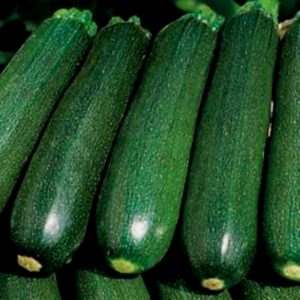
The vegetable obtained as a result of selection was named zucchini. Although his "mother" is a pumpkin, he belongs to the variety of squash. Therefore, the vegetable is called that way: "zucchini squash."
Description of zucchini
Like zucchini, zucchini is an annual plant in the pumpkin family. It is healthy, has an unobtrusive pleasant taste, and goes well with other ingredients. However, there are undoubtedly differences between “dad” and “son”.
To distinguish zucchini from zucchini, you need to know what the difference is.
External signs
The shape of the vegetable resembles a zucchini, but the zucchini is smaller: the largest specimens barely reach 25 cm. The color of the zucchini is dark green, they are also black, some subspecies have a pattern on the skin in the form of stripes or specks. The skin itself is softer than that of a squash, the seeds in the pulp are almost invisible.
The photo shows different types of zucchini.
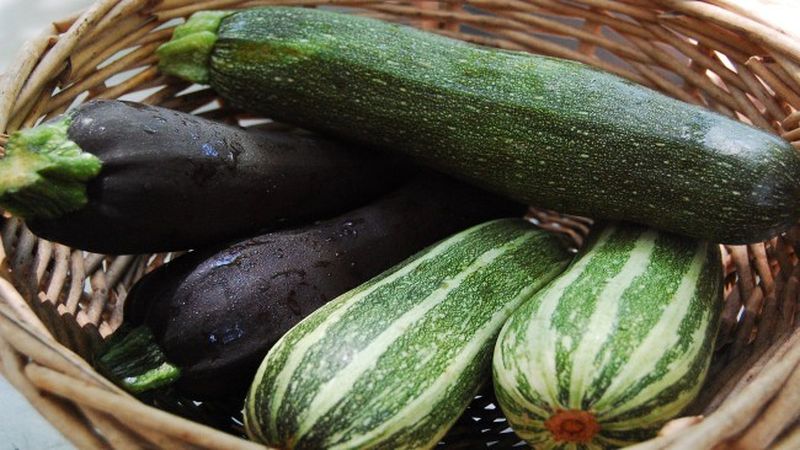
In the garden, the zucchini bushes do not spread on the ground, and the carved dark green leaves stretch upward. The flowers are large, in contrast to the squash, and have a bright rich yellow color. The fruits are early ripening: the harvest of ripe zucchini appears in June.
Taste characteristics
The taste of zucchini is more pronounced than that of zucchini, and has a sweetish aftertaste. In order not to lose taste and aroma, these vegetables are recommended not to be canned, but to be frozen. Better yet - eat them raw, At the same time, you do not need to remove the skin, it is tender and tasty, it contains fiber.
Beneficial features
The composition of zucchini contains a large amount of vitamins, but the record among them belongs to vitamin C, which is 17.9 mg in 100 g of the product, which is 30% of the daily value. Of the minerals, manganese provides 8% of the body's daily need for it, which is important for the formation of a growing body and for relieving nervous tension.
Also 100 g contains:
- calcium - 16 mg;
- zinc - 0.32 mg;
- selenium - 0.2 mcg;
- magnesium - 18 mg;
- iron - 0.37 mg.
The fiber contained in the skin has a beneficial effect on the peristalsis of the gastrointestinal tract. The calorie content of the vegetable is 17 kcal, which makes it ahead of the zucchini with its 24 kcal.
Zucchini is advised to be included in the menu of various diets and fasting days due to its low calorie content and lack of cholesterol. If you are determined to keep your body healthy, include zucchini in your diet!
Attention! Zucchini is not recommended for people suffering from renal diseases, during which the processes of potassium excretion are disrupted.
The best varieties of zucchini zucchini
As a valuable vegetable crop, zucchini is constantly being improved. Our breeders are also working on the stability of its beneficial properties: yield, cold resistance, early maturity, mild taste and low calorie content.
Best hybrids
There are many different varieties of zucchini on the seed market. Among domestic, especially popular are:
- a hybrid with the gentle name of Tsukesh, it is suitable for areas of risky farming, unpretentious in maintenance. Differs in a pronounced taste and is recommended for the preparation of salads and canning;
- fruits of another hybrid - Zebras - excellent melon decoration! They are distinguished by their unusual colors: dark green stripes on a light green background;
- Nephritis - a variety with increased immunity to fungal diseases. Also moisture resistant and suitable for regions with short cold summers and early rains;
- grade Skvorushka it is distinguished by high productivity and unpretentiousness, it is well and long stored.
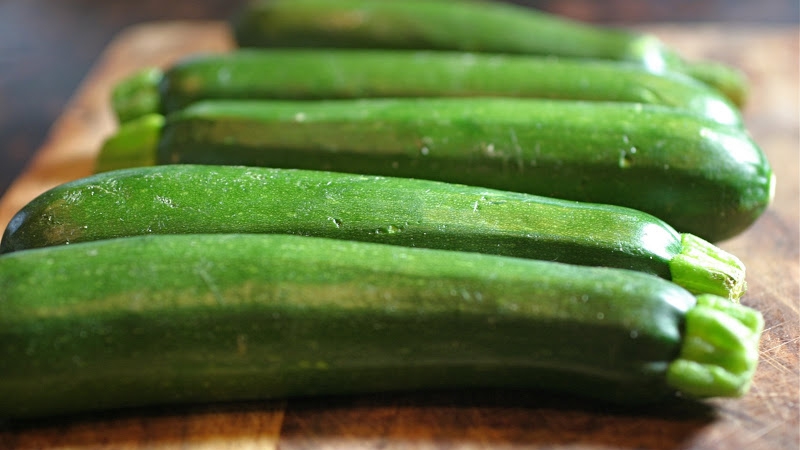
Of foreign hybrids, it is worth mentioning:
- Diamante - a variety remarkable for its sowing characteristics and productivity, bred by German breeders. This is an early ripe zucchini, it bears fruit forty days after planting in the ground;
- zucchini black - Winner of the 1957 American Breeders' Competition, not a hybrid variety. It is named so because of its dark green color, which looks black from a distance. They say about him - "sit down and move away", he is so early maturing and unpretentious;
- Ronda - mid-season zucchini, characterized by high productivity and long-term fruiting. The fruit is round, slightly pumpkin-like, but grayish green.
Growing features
Unlike unpretentious zucchini, zucchini require increased attention. They love fertile soil, warmth and moisture, and cannot stand cold.
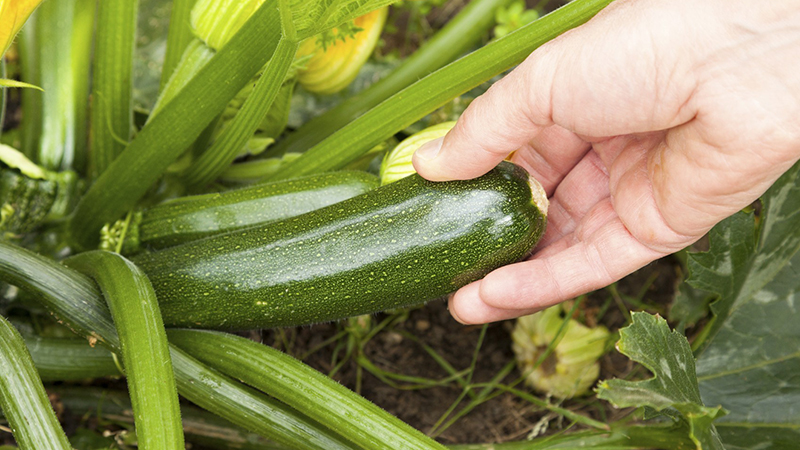
How to plant and grow
To obtain a good harvest, it is necessary to provide plants with favorable growth conditions and regular weeding. The plant does not like acidic soil, and it is useful to add ash to the soil to reduce acidity. In autumn, you also need to think about organic fertilizers, but do not get carried away with them - an excess of fertilizers in the soil will negatively affect the yield.
The seeds are planted first for seedlings. To transfer the sprouts to open ground, it is necessary to wait for stable weather, since the zucchini is afraid of frost and will die at the first temperature drop.
It is better to hold the seedlings in a greenhouse or at home by the window, and start planting with the appearance of the warm sun. The seedlings need care, which consists in regular watering and weeding. When watering, do not let water get on the leaves. Fertilize twice - when leaves appear and after fifteen days. With this approach, the first crop can be harvested in June.
Collection and storage
When a young ovary appears on the bush, you need to wait a week and start collecting fruits. The plant's yield is high, you can harvest zucchini twice a week: 15-20 pieces from one bush at a time.
Zucchini 10-15 cm long with delicate soft skin are good for eating. Such fruits can be eaten raw: they are saturated with trace elements and vitamins. Young specimens are quite capable of replacing cucumbers. For heat treatment - stewing, frying and baking - fruits up to 20 cm in size are suitable. In autumn, the largest fruits are harvested.
However save the whole crop fresh will not work - it is a perishable product.
For your information! The zucchini is in the refrigerator for a week. The best way to preserve this delicious vegetable is to freeze it. When frozen, the beneficial qualities of the product are not lost. Another way is winter preparations. These are appetizers, salads, and mashed potatoes with caviar. The originals even make jam and make juices with pulp.
Cooking applications
We have come to the most delicious section - recipes with descriptions. Of course, our man is capable of preparing a wide variety of dishes from this friendly vegetable. But curious how things are with the preparation of zucchini in his homeland - in Italy?
Original zucchini dishes
Zucchini flowers in batter
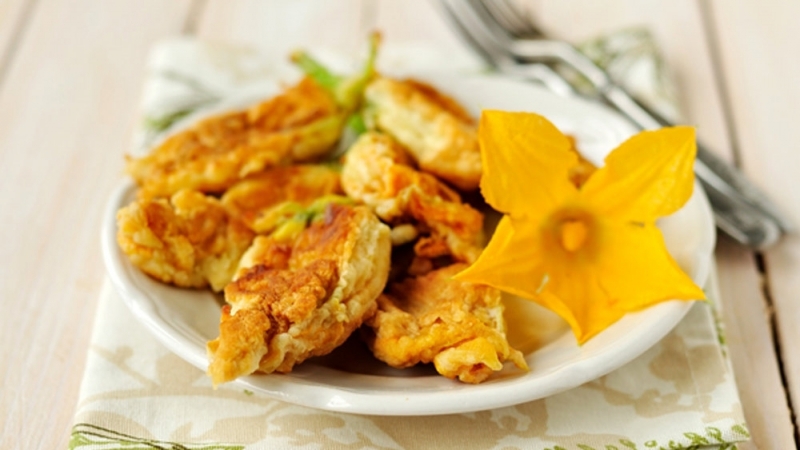
Italians are imaginative people. They not only love the "pumpkin", they love it VERY much, therefore, not only the fruit itself, but also its flowers are used for cooking. This appetizer will surprise your guests.
For cooking we need:
- zucchini flowers - 8-12 pcs.;
- egg - 1 pc .;
- flour - half a glass;
- yogurt or sour cream - half a glass;
- salt and sugar (to taste), soda (on the tip of a knife);
- vegetable oil for frying;
- tomato - 1 pc., greens - to taste;
- paprika - 1-2 pcs.
We prepare the batter: beat the egg, add yogurt or sour cream, flour. Mix well by adding salt, sugar, soda.
Holding the zucchini flower by the stalk, dip it into the batter and immediately into the already heated oil - for frying. Fry on both sides.
Decorate the finished dish with herbs and thinly sliced tomato slices. Tasty, healthy and unusual!
Puglia puree soup

To make the Puglia puree soup we need:
- zucchini - 0.5 kg;
- potatoes - 2 pcs. medium size;
- shallots, but you can use any one in the house - 2 heads;
- butter - 20 g;
- garlic - 1 clove;
- lime - 2 pcs.;
- curry powder - 0.5 tsp;
- milk - 500 ml;
- cream (thick) - 100 ml;
- salt, pepper to taste;
- seasoning: coriander, turmeric, dried mint - ½ tsp each. Thyme sprigs.
Peel the onion, chop finely. Heat butter in a frying pan and fry the onion in it until transparent. Add chopped garlic and peeled and diced potatoes. Simmer for 5-7 minutes, then add the chopped zucchini - peeling is optional. After 3 minutes, remove from heat and transfer to a saucepan.
Remove the zest from the lime and squeeze the juice out of the pulp. Pour half of milk, half of lime juice into a saucepan, add curry and bring to a boil, reduce heat, cover. Cook for 10-12 minutes, then remove from heat and let cool slightly. Use a mixer to beat the mass in puree, add the rest of the milk and bring to a boil. Season with salt, pepper, add zest and the rest of the juice. Add coriander, mint and turmeric seasoning.
Whip the cream separately.
When serving, decorate a plate of Puglia puree with a spoonful of whipped cream and thyme leaves.
Zucchini muffins
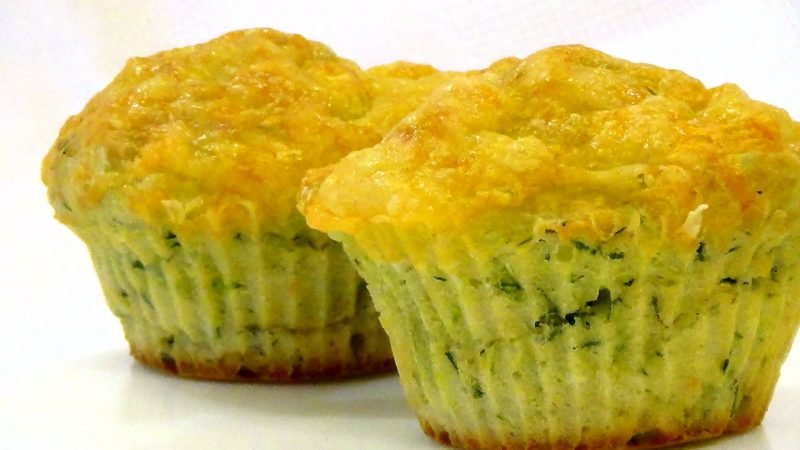
For cooking we need:
- small zucchini - 2 pcs.;
- egg - 2 pcs.;
- flour - 2 tbsp.;
- low-fat kefir or yogurt - 1 tbsp.;
- sugar - half a glass;
- vegetable oil - 5 tbsp. l .;
- cocoa powder - half a glass;
- instant coffee - 1 tsp;
- walnuts - 2 tbsp l .;
- baking powder - 2 tsp;
- cinnamon - 1 tsp;
- ground cloves and allspice - mixture - 0.5 tsp;
- chocolate chips.
Prepare a large bowl to knead the dough. Drive in eggs, mix them with kefir / yogurt and vegetable oil. Pour in flour, cocoa powder, coffee, add sugar and baking powder. Then add the grated zucchini and medium chopped nuts.
Fill the muffin molds with the prepared mass by ¾. You need to bake in a well-heated oven at a temperature of 200 degrees. After 25 minutes, take out the finished muffins and sprinkle them with chocolate chips.
Zucchini again
Many people say why this “foreigner” should pay so much attention: after all, we have a vegetable marrow, a valuable vegetable in all respects.
Perhaps this is so, but it is not without reason that the zucchini has taken root in our country. Its early maturity and productivity appeal to gardeners.The low calorie content of the "Italian" (17 kcal) breaks zucchini records and is liked by all followers of a healthy lifestyle. There are also victories in cooking: zucchini does not require peeling of the skin, it is eaten raw, many delicious, original and healthy dishes are prepared, even sweet pastries.